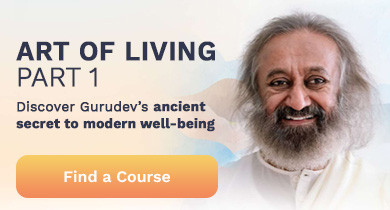Updated by: Denise Everheart
Learn the soothing alternate nostril breathing technique, and calm your restless mind now. Instructional video included.
Alternate nostril breathing is easy to practice and offers a host of benefits we all can use in our daily lives. It is a great technique to practice before yoga or meditation. You can also use it right before a business meeting or before going to sleep. Alternate nostril breathing leaves you feeling balanced and ready for dynamic activity or deep rest.
If you want to feel more balanced and calmer, this is the breathing technique you've been looking for! Let's inhale and dive in!
Breathing is the new yoga
In 2016, Vogue magazine declared, “Breathing Is the new yoga.” highlighting Art of Living’s SKY Breath Meditation (Sudarshan Kriya).
Also, according to Business Insider, Hillary Clinton attested to using the alternate nostril breathing technique as a saving grace during the stressful 2016 presidential election.
Yes, the world is now catching onto the benefits of yogic breathing exercises! Whether running for president or running late for work, alternate nostril breathing is an excellent way to tap into the body’s natural stress-reduction mechanisms.
An introduction to alternate nostril breathing
In Sanskrit (one of the oldest languages in the world), alternate nostril breathing is called Nadi Shodhan Pranayama, which translates to “subtle energy clearing breathing technique,” and it has many benefits.
Alternate nostril breathing helps calm the mind, reduce anxiety, and brings a feeling of relaxation to the entire body. It also relaxes the mind in preparation for meditation, which can be helpful for those struggling to settle down before meditating.
When performed for just a few minutes, alternate nostril breathing can instantly reduce stress and fatigue. It is also a quick and efficient practice to do before high-stress situations such as job interviews and public speaking engagements.
How to practice the alternate nostril breathing exercise
Learning how to practice alternate nostril breathing is simple and easy, just follow these instructions:
Preparation: Sit in a comfortable position with your spine long and your hips relaxed. Relax your jaw. Close your eyes.
Place your left hand on your left knee with the palm facing upward, or in a hand position called Chin Mudra, by gently touching the tips of your index finger and thumb together, with the remaining fingers outstretched.
Practice: Place the tip of the index finger and middle finger of the right hand on your forehead in between the eyebrows. Your ring finger and little finger will close the left nostril, and alternately the thumb will close the right nostril.
Resting the tip of your right index finger and middle finger lightly between the eyebrows, take a deep breath in
On the exhalation, close the right nostril with your thumb and breathe out through your left nostril
Inhale slowly through the left nostril, then close the left nostril with your ring finger and breathe out completely through the right nostril
Breathe in through the right nostril and then close with the thumb, breathe out through the left nostril
These steps constitute one round of alternate nostril breathing. Keep your breath even, slow and gentle.
Perform five to nine rounds of this alternating breath between the nostrils
Remember to always inhale through the same nostril you just exhaled through
Keep your breath even, slow, and gentle all throughout
Finish your final round with an exhalation on the left side
Beginner tip: If you are a beginner, breathe in for four counts and exhale for four counts. As you improve in your practice, your exhalation could be a little longer (six to eight counts) than your inhalation (four counts). As you advance in your practice, you can gradually increase the length of your breaths. You can also add breath retention after each inhalation and exhalation.
For even more clarity, you can follow this easy video so that you are confident in practicing alternate nostril breathing on your own. For further support, you can seek guidance from a yoga or meditation instructor familiar with how to practice alternate nostril breathing.
This slow yogic breathing technique is a great way to end your yoga asana practices. After yoga, do nine rounds of alternate nostril breathing followed by a soothing meditation. You can choose one from the Journey App and download it for free!
Benefits of alternate nostril breathing
There are many more pranayama techniques you can learn. But this soothing alternate nostril breathing is on the top of the list for the positive effect that it offers, especially for its psychological benefits.
Alternate nostril breathing:
Calms and centers the mind
Brings the mind to the present moment and out of the past (releasing old fears, regrets, and worries)
Helps improve function of the circulatory and respiratory systems
Relieves stress and relaxes the body and mind
Harmonizes the left and right hemispheres of the brain, which correlate to the logical and emotional sides of our personality
Purifies and balances the nadis (subtle energy channels) ensuring a smooth flow of prana (life force) through the body
Soothes the nervous system
Helps to maintain body temperature
Helps to lower blood pressure (though not a substitute for medication)
6 Things to remember when you practice alternate nostril breathing
The breathing pattern is: breathe out, breathe in, switch sides, and repeat.
Always end with an exhalation on the left side.
Do not force the breath, keep it gentle and natural. Allow the breath to be smooth and even without creating force or pressure.
Do not breathe through the mouth or make any sound when practicing.
Place the fingers very lightly on the forehead and nose. There is no need to apply much pressure.
Regular practice will give you the most benefits.
Learn some more powerful breathing exercises at an in-person or online course
Certified teachers from the Art of Living Foundation teach many yoga, breathing, and meditation programs where you can learn some more breathing techniques that will help you to improve your quality of life and well-being. Our signature technique is SKY Breath Meditation. I absolutely love it, and it has been a game-changer for my life! You will love it too!
Benefits of SKY Breath Meditation
Improved respiratory function
Helps to normalize high blood pressure
Greater mental focus
Enhanced deep sleep
And more!
Join a FREE online interactive session with a live instructor to learn more about SKY and also get to experience a relaxing guided meditation.
Learn more about pranayama by reading Why Breathwork is Fast Becoming A Leading Edge for Mind-Body Wellness.
Denise Everheart is a freelance writer, life-long meditator, SKY Breath Meditation instructor, party planner, veg chef, and recipe designer. Follow her @everheartstudio4meditation and @celeplateyourlife on Instagram.



























